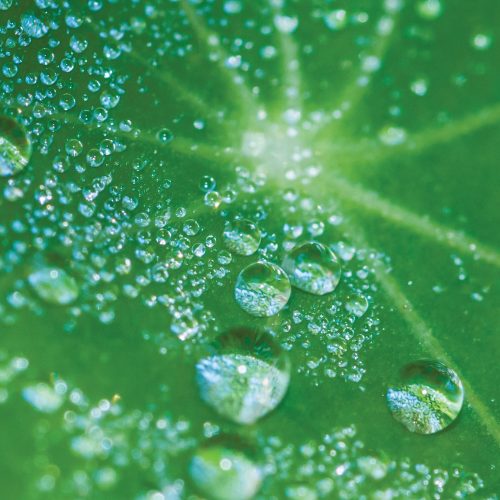Multi-disciplinary research involving CUBG’s Director, Professor Beverley Glover, uncovers more about the extraordinary twisted cells of the iridescent Pollia condensata fruit.
Pollia condensata, known as the marble berry, is a perennial herbaceous plant found in the forested regions of Africa and it produces a hard, dry, shiny, round, metallic blue fruit. It is this fruit which appears to have a tale in its twist!
Plant cell walls are made of cellulose fibres laid down on top of each other like plywood. In many cells, each layer is laid down with a twist from the one before – but why?
By measuring the properties of individual cells in an extraordinary fruit, researchers in Cambridge have got one step closer to finding out.
Corkscrews turn either clockwise or anticlockwise. There is no rearrangement that can turn a left-handed corkscrew into a right-handed one. This is one of the fundamental symmetries in nature. Any twisted material is subject to the same limitation, and nature is full of twisted materials.
One of the most striking is a twisted structure like a plywood made of natural fibres called ‘helicoid’ which is found in materials as diverse as bone, crab claws, insect wingcases and plant cell walls. If the development of this structure was random, we’d expect to find left and right structures equally often in nature.
Surprisingly, almost all the natural structures found are left-handed. That’s surprising because we still don’t know how the material is controlled to grow clockwise or anticlockwise.
Nearly a decade ago, an even more shocking discovery was reported in the hard-shelled fruit cells of a plant called Pollia condensata. In some of the outer cells of this fruit, scientists found that the plywood is right-handed instead. It remains the only reported example of reversed handedness.

Now, a team headed by the same scientist, Professor Silvia Vignolini from the Cambridge University’s Yusuf Hamied Department of Chemistry, have taken a step closer to understanding how this fruit produces its extraordinary cells. In doing so, they may have shone light on the development of plant cell walls in other species. Understanding how these materials are constructed is a fundamental question which will help us understand biological, biochemical and materials processes.
In a paper published in the multidisciplinary scientific journal PNAS (Proceedings of the National Academy of Sciences of the United States of America), the researchers explain how they surveyed the surface cells of Pollia condensata fruits to find out more about the right-handed cells. They found they occurred in clusters, tending to develop close to the vascular tissues. They also tended towards red colours, where the left-handed ones tended to be blue. The colour each cell reflects is defined by the width of layers within the cell wall, so this indicates that there is something else different in the right-handed cells. But what?
“It’s exciting to show that the structural properties of the cell wall might well be directly due to the molecular compounds that build them up.”
Co-first author, Dr Yin Chang tested the strength and hardness of the cells by carefully removing the outer surface and testing the resistance when the cells were individually prodded, one by one. By correlating this to their colour and handedness, she found that left- and right-handed cells have different hardness and strength.
The result shows that it is likely there are different compounds inside the cell wall which might even, according to some theories, be what causes the twisting cell wall to turn left or right.
“We were surprised to find this correlation of mechanical properties with the optical properties: it took a lot of effort to match each measurement, but once we managed, the result was very striking” says Chang, who recently completed her PhD.
By combining expertise from many different scientific disciplines, the research extends our understanding of the biological processes at the heart of plant biology.
“These right-handed cells still provoke a lot of questions,” says the other co-first author, Dr Rox Middleton. “They are so unique in helicoidal plywoods, there is much more to understand about how and why they managed to switch their handedness. I love working on such a strange and beautiful fruit.”
“It’s exciting to show that the structural properties of the cell wall might well be directly due to the molecular compounds that build them up,” says Professor Vignolini. “Understanding how that works is fundamental plant research. We are delighted to have contributed to that work.”
This article was originally published by the Yusuf Hamied Department of Chemistry.
Research



